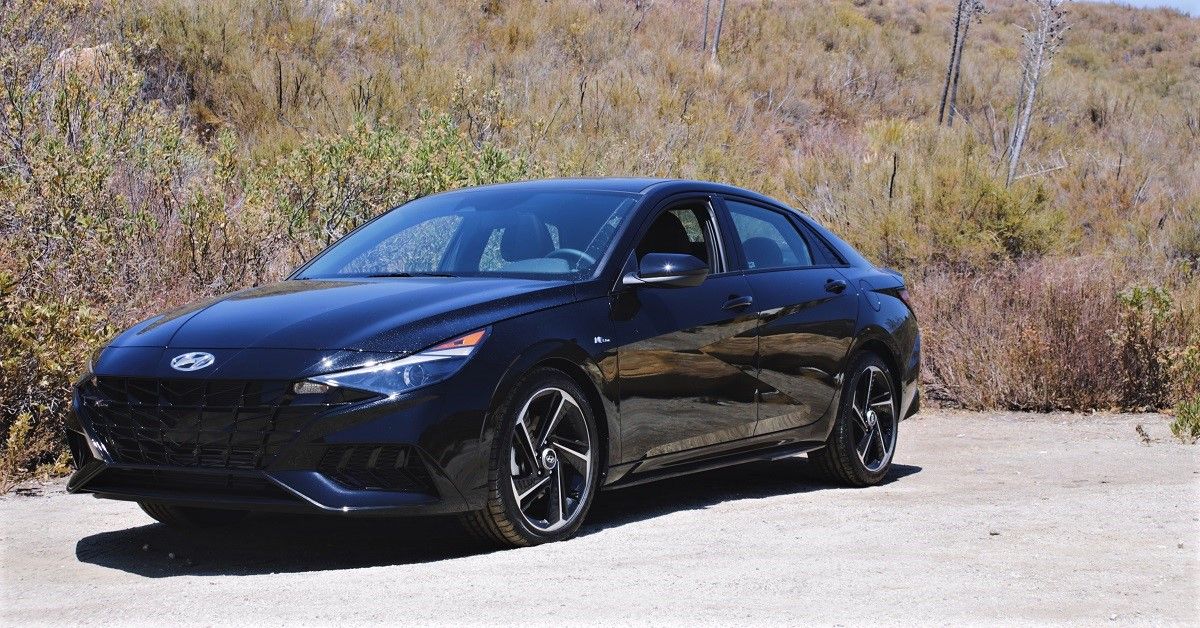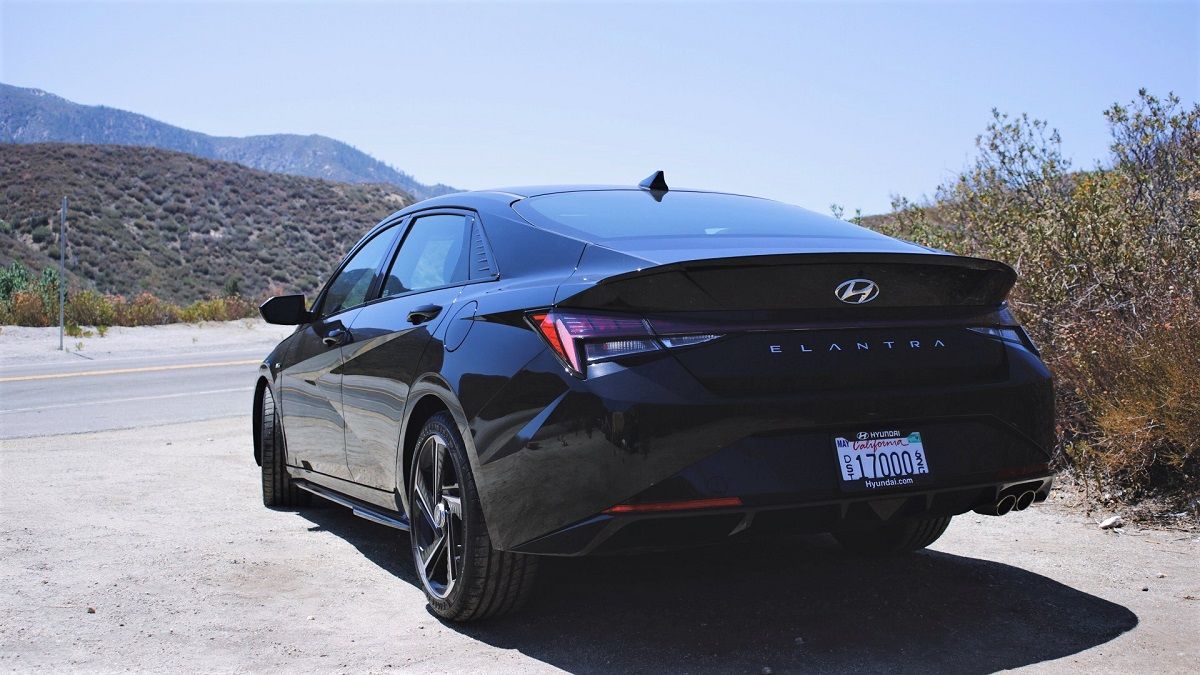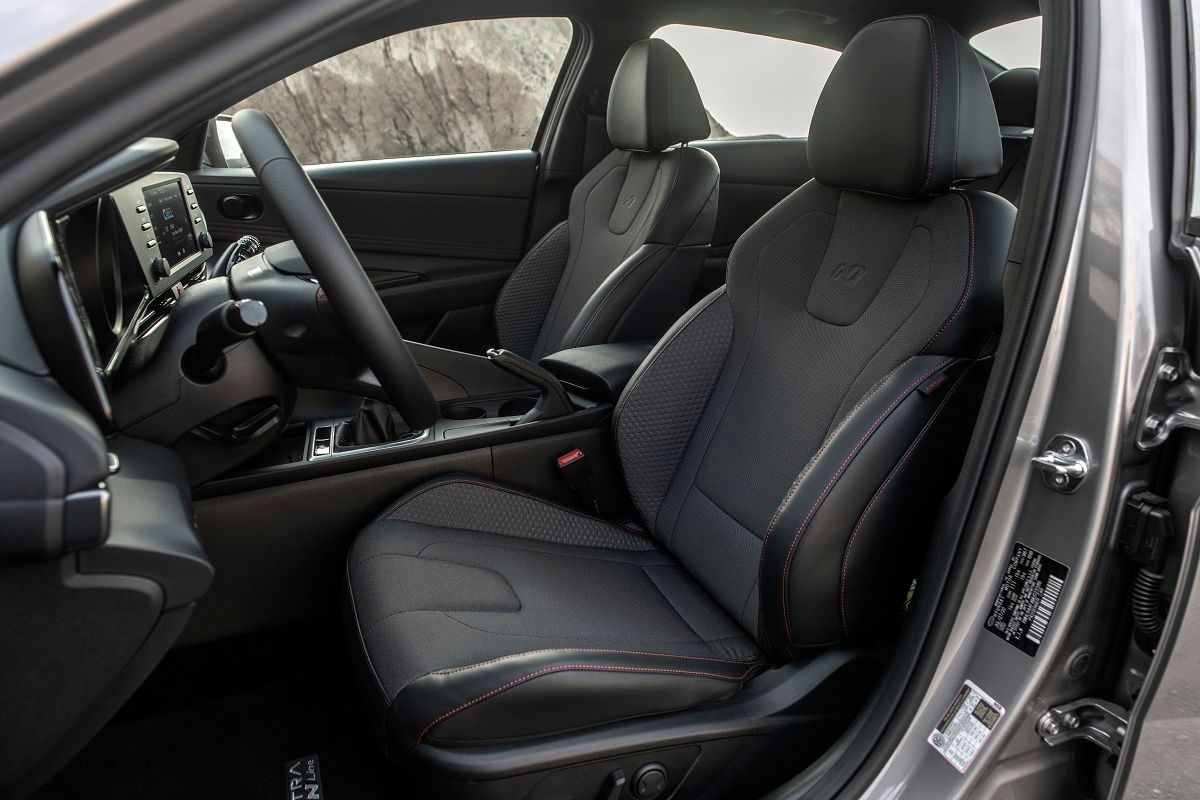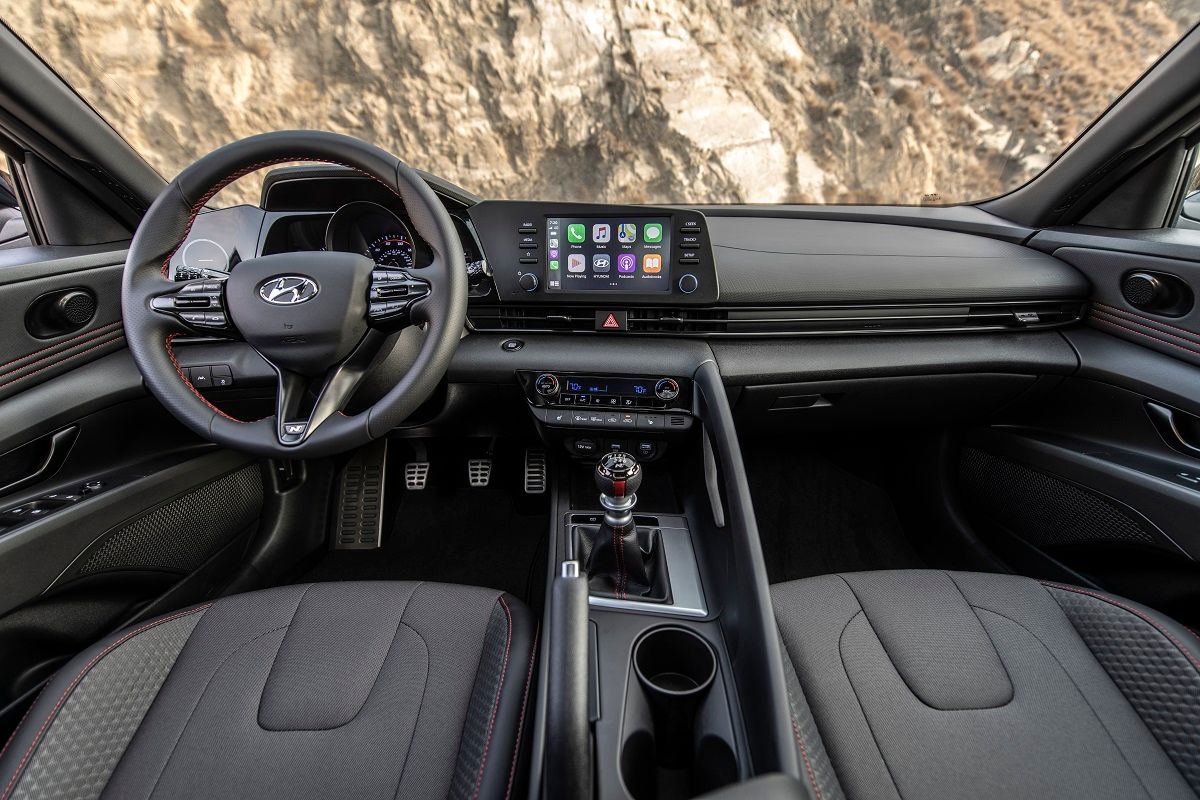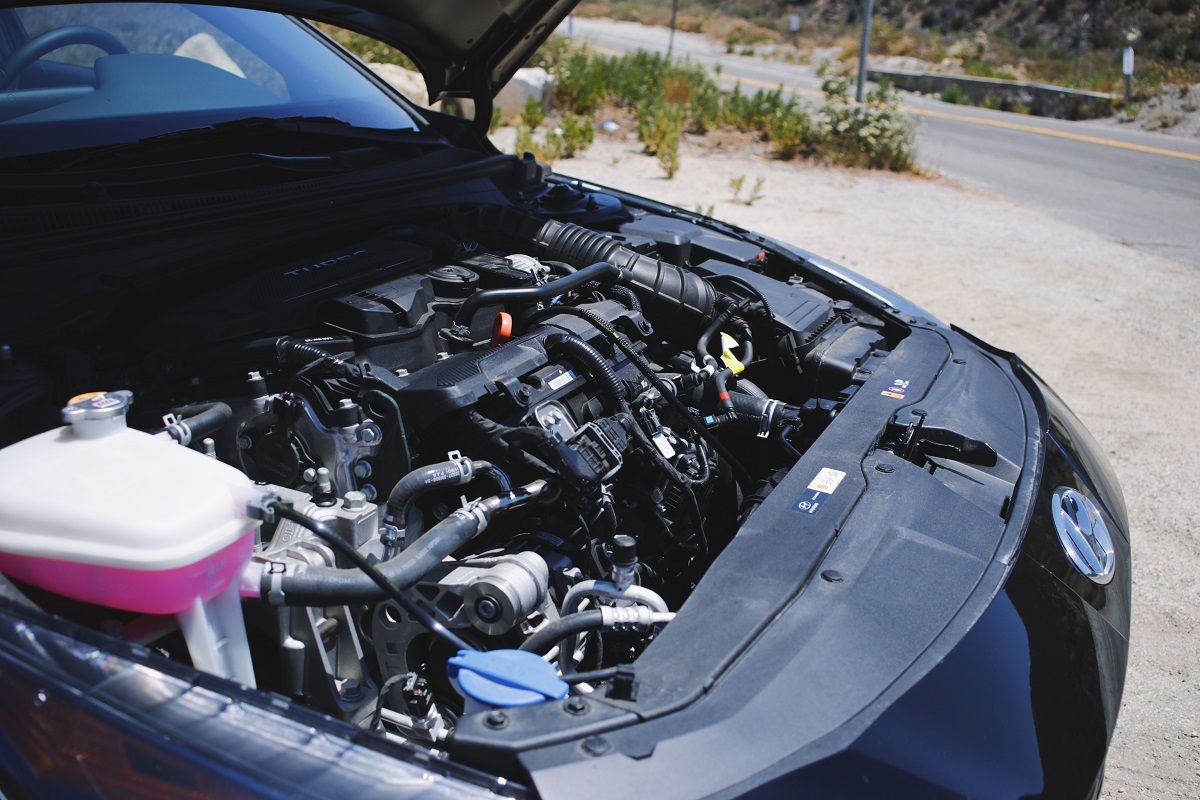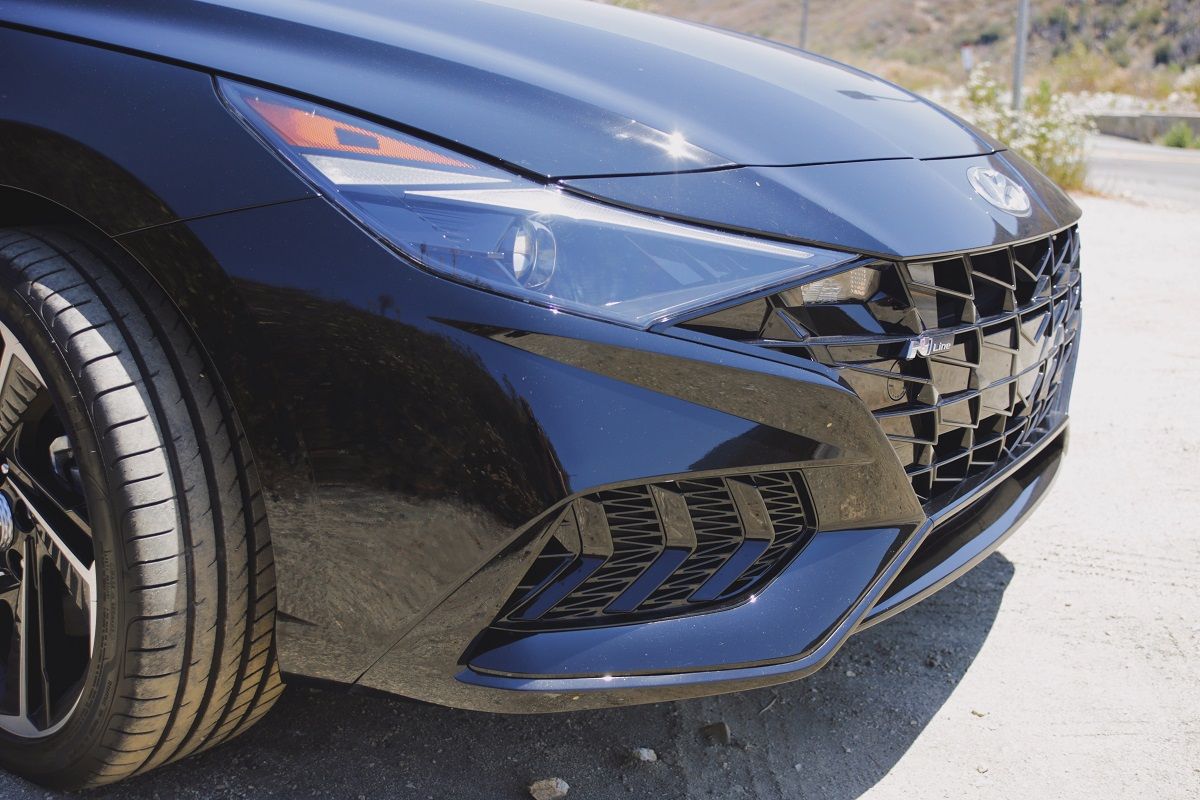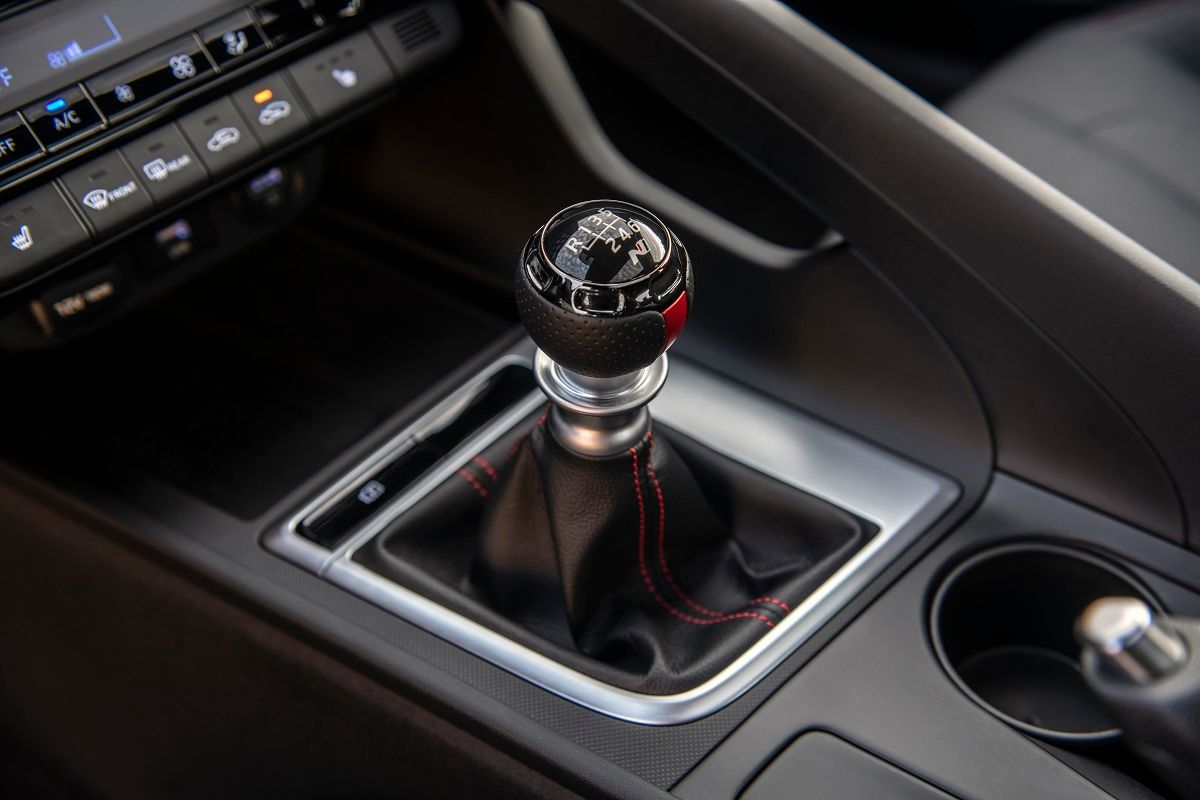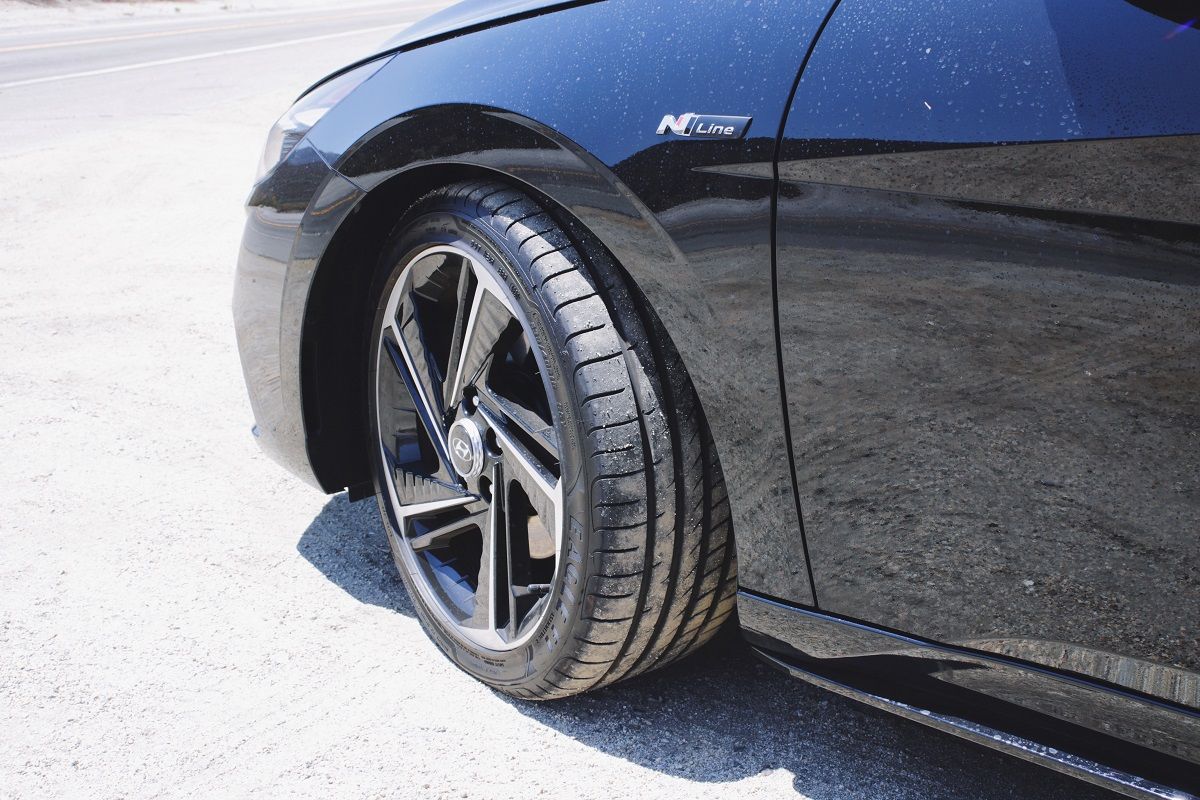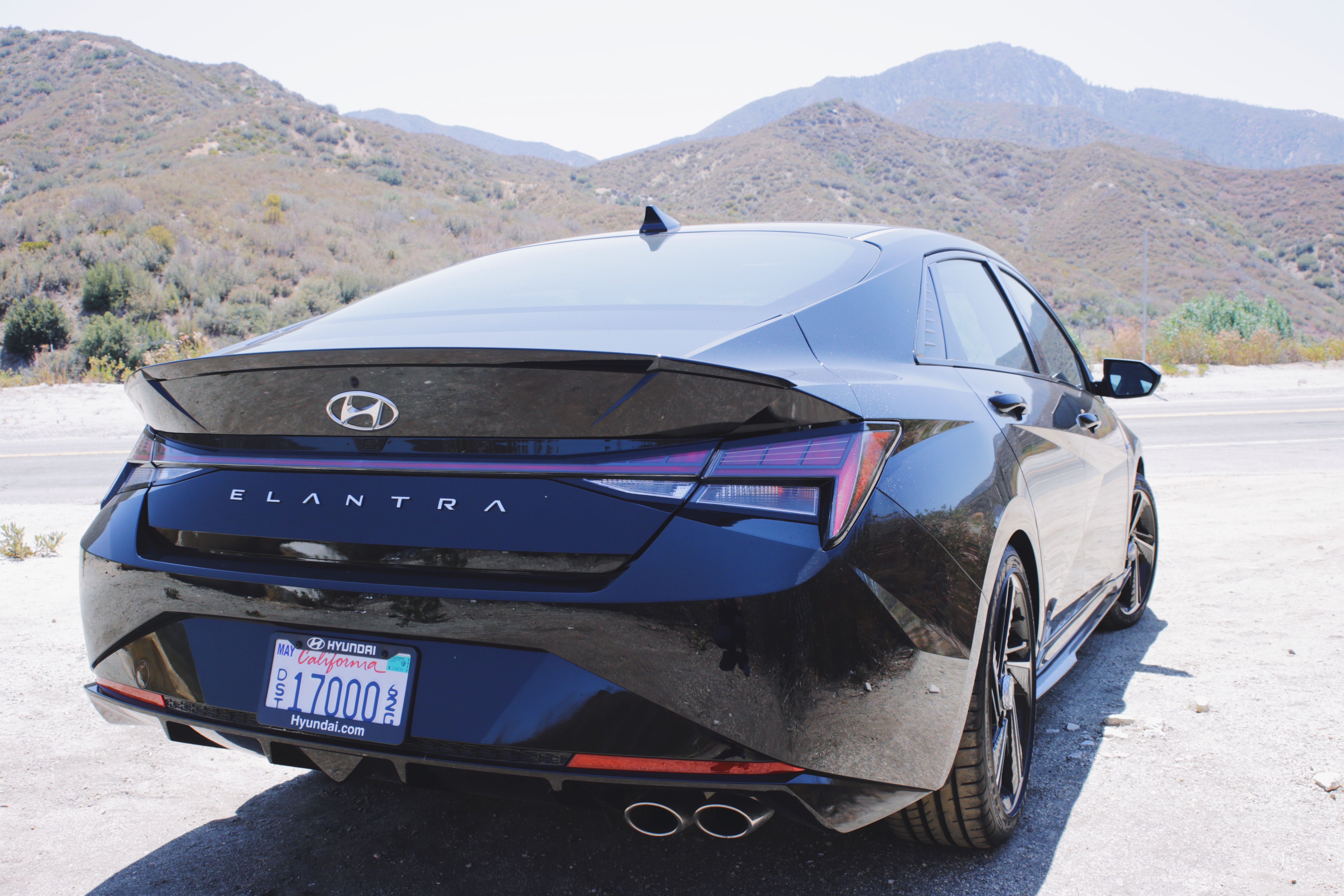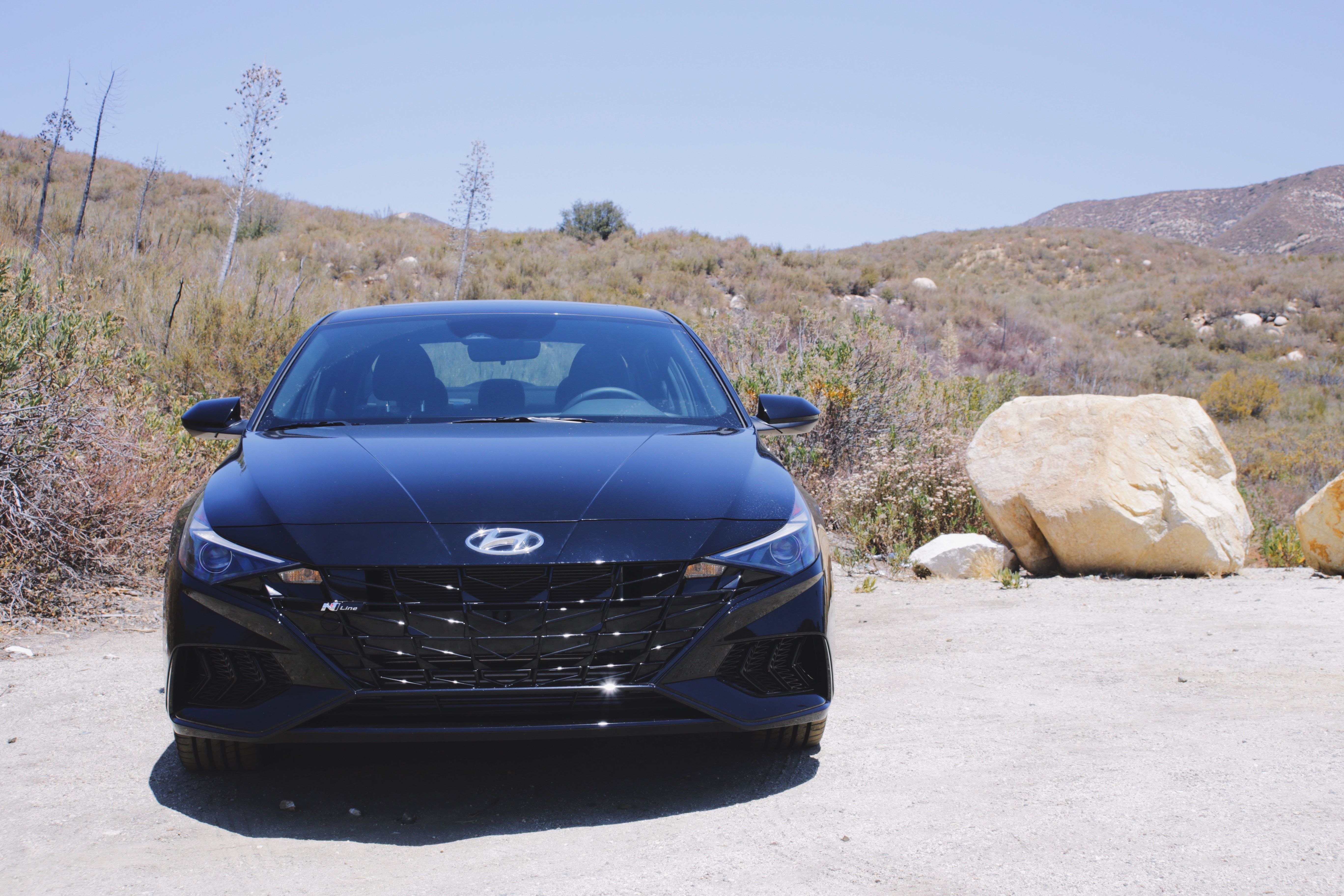Back in the early-to-mid-2000s, a bunch of automakers each had their own reasonably priced, enthusiast-centric sport compact. Mazda had the Protege MP3 and then the Mazdaspeed Protege, VW had their hot hatch OG the GTI, Dodge offered the Neon SRT4, Ford souped on the Focus with their SVT variant, and Honda marketed their high-rpm screamer Civic Si. The only two that have been around since are the GTI and Si; everyone else unfortunately moved on from this underappreciated segment (queue: a wistful gaze back to simpler times, back when there were fewer crossovers on the road).
For the longest time the Si and GTI went unchallenged; if you wanted a naturally-aspirated screamer, you went with the former. If you wanted turbo torque, you chose the latter. However, now they’re not only both turbocharged, but they’ve also been challenged by a compelling option from South Korea: the 2021 Hyundai Elantra N-Line in six-speed manual. Well, there's also its hatchback cousin the Veloster Turbo R-Spec, however, that's unfortunately being put out to pasture before 2022.
Based on the brand-new Elantra generation, and featuring a decently-long list of enthusiast-centric design and engineering, plus some trickle-down goodness from the Veloster N, it’s a worthy opponent for sure. With 201 hp, a slick six-speed manual gearbox, and some sporty suspension tuning, it’s got a lot of potential.
How does this sport compact formula balance out in the real world, you ask? I recently had a whole week with a black on black, ultra-fresh example; here’s how. Big thanks to Hyundai for lending me this sleek black model that retails for $25,100 after delivery.
Striking Looks That Stick Out
There’s a reason why the 2021 Hyundai Elantra won the 2021 North American Car of the Year award; it truly looks like nothing else on the road. Between its sharp angles, the interesting trapezoidal thing going on across the front and rear doors, and mildly spaceship-looking front-end, it’s very unique.
Its angular shape and lines lend well to a sport compact figure for sure. Especially when it features prominent N Line badging applied to important places, and 235/40/18 Goodyear Eagle tires mounted up to its black and silver, impeller-looking wheels. Finishing off the sporty cues are polished metal exhaust tips, informing passers-by that there’s a more than average amount of enthusiasm engineered into this Hyundai.
An Interior With A Surprising Amount Of Sporty Design
The Elantra N Line’s interior is truly a nice place to be. Its sport seats, which I swear are from last year’s Veloster N, are quite comfortable, and feature heating. They’ve got great bolstering, lots of head support, and definitely look the part in this unique sport compact. The driver’s seat is a six-way adjustable unit with lumbar support, whereas the passenger seat is only four-way adjustable. Plopping down into them lets you know right off the bat that this Elantra is meant for lateral G force fun.
Then there’s the layout. The N Line’s switchgear feels generally solid, but everything else is comprised of creaky, thin plastics. Though, Hyundai does a great job of making the surfaces that the driver interacts with the most, from the arm rest to the steering wheel, very nice. The shifter, which I’m almost certain is the same as the Veloster N’s, has a great feel (and even better action, but more on that later), and the steering wheel dimensions are great. After the seat, these two let the driver know that this is a cut above a non-sport Elantra.
Two particular design features that stick out as kind of odd, yet fun: its gauge-looking decal stage-left of the center gauge cluster, and the gigantic handle to the right of the shifter. The latter not only gives passengers something to grab onto in the twisties, but also protects them from un-intended thigh grazes, or even mild thigh punches, while shifting with some gusto.
The center 8-inch high-definition infotainment screen is good, standard fare. It contains a system that’s plenty easy to use and quickly connects to Bluetooth and Apple CarPlay without issue. The six-speaker sound system is also very, very good for a compact that sits right between $20,000 and $30,000; audio clarity is great, the volume really cranks, and bass is quite substantial. Left of center, the sport steering wheel has everything the driver needs to toggle cruise control, as well as such advanced driver assistance tech as lane keep assist and radar cruise control.
When it comes to space, the Elantra generally scores well in most areas, though falls short in others (pun intended). Leg and shoulder room are generous, however head room is severely lacking for anyone over six feet tall. I’m six foot three, and I had to recline my seat more than I'd prefer, and kept knocking my head against the trim that lined the edge of the headliner. The backseat area essentially mirrors the front seat's, though with even less head room. Though, overall visibility is very good. Staying cognizant of Elantra's dimensions is a little tough, but luckily its excellent rear backup camera fills in the gaps just fine.
Forward visibility is quite good despite the N Line’s low roofline, which helps instill a sense of confidence when it’s driven the way it was engineered to: enthusiastically.
Torquey, Turbocharged Fun, But Not Enough Of A Soundtrack
The Elantra N Line has Hyundai’s all-aluminum 1.6 Turbo GDI DOHC 16-valve CVVD Inline four-cylinder under the hood, which produces 201 hp and 195 lb-ft of torque. This is enough oomph to get its 2,954-pound stature up to 60 mph from a standstill in a little under seven seconds when shifting with a stick and balancing a gas and clutch pedal. This is pretty much on-par for its sport compact segment.
Normally, launching a torquey turbo engine is a grin-inducing experience, but the N Line acts awfully awkward. Its incredibly vague clutch pedal and, presumably its ECU tuning, disallows for a clean, spirited launch, even with traction control off. If jumping between lights is one’s intention, the N Line isn’t the ideal choice.
Still, it's a joy to shift its six-speed manual transmission, especially in 2021 when the manual transmission is a miserably rare option. Interestingly, Hyundai is a tad old school in their trim level pricing—they charge substantially extra to have the N Line with an automatic gearbox. God bless 'em.
The shifter feels solid, the throw is relatively short, and it has a good, springy action to it. It's easy to find each gear, and thanks presumably to some clever ECU tuning, stop-and-go traffic is a breeze; just coming off the clutch without the gas pedal is all that's necessarily to creep along. I swear this is the same shifter that's in the manual Veloster N, and that's very much a good thing.
Elsewhere, the engine is a joy to rev up, and has torque all over its tachometer. Peak torque begins at just 1,500 rpms, so highway passes in any gear are very easy, and there’s no need to downshift after every twisty, mountain road corner.
Though, spirited driving is very much a stereo-off, windows-down experience; you can barely hear the N Line’s engine and exhaust. This makes rev matching a bit tricky, and with the exception of some mild turbo spool and blow-off valve noises, the engine doesn’t sound like it's that happy to be wrung out. This is a shame, as the torque really does feel good, and complements the N Line’s lateral G force qualities quite well.
They’re Serious About The N Badge: This Elantra Has Excellent Chassis Dynamics
The Elantra N Line’s suspension consists of MacPherson-type suspension up front, and fully-independent multi-link suspension in the rear. It also features a 17mm rear sway bar (the base Elantra is devoid of any-size sway bar), a thicker 23mm front sway bar, slightly-sportier spring rates, and what felt like more performance-oriented damping. Though, it could just have the same damping as the non-N Line. This adds up to superb handling across the board: good body control and grip in the twisties, and a comfortable, nicely-compliant ride over rough street and highway surfaces.
Increased lateral G action is especially, really something. This souped-up Elantra is so fun to sail through lengthy sweepers, brake deep into tight right-handers, and generally just weave through all kinds of public road apexes. The excellent damping, suspension design, and surprisingly sturdy brakes all add up to a sport compact that feels confident while turning in under braking, and is easy to adjust mid-corner without causing any drama. Feeling for which tire, or tires, the weight is shifting towards is very easy; the chassis impressed me with its communication.
Its 235/40/18 Goodyear Eagle tires put up reasonably well with what they deal with in the twisties at a decent clip; they start singing well before they become overwhelmed, and luckily never break loose unexpectedly. They also don't feel too squidgy, which is kind of surprising. Normally, mildly-performance-centric all-seasons are still very much all seasons when put to the limit, but these hold firm. Perhaps this is another testament to the Elantra’s solid chassis.
A Compelling Option That Spars Well With The Competition
After a full week of highway and city street commuting, as well as a few spirited runs up in the mountains above Los Angeles, I found the 2021 Elantra N Line to be a solid addition to the current sport compact market. It’s sorely needed, too, as this segment is depressingly small these days.
Hyundai’s striking, angular sedan would be a solid green checkmark for anyone after a fuel efficient, comfortable, well-appointed, and fun sedan. It’s slightly out-gunned by the Honda Civic Si and Volkswagen GTI, but its chassis and MSRP keeps in the ring for sure. Though, tall folks would definitely have to lean towards the GTI, or just look elsewhere.
I’m quite excited to see how the just-fully-debuted Elantra N, essentially the sedan version of the Veloster N, stacks up against the Si and GTI’s more powerful siblings; if the N Line's chassis is any indication how it’ll fair, things are looking promising.

